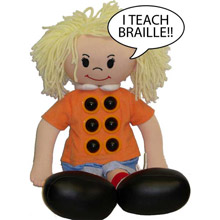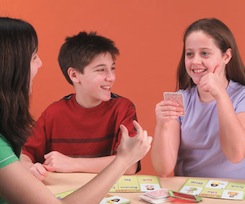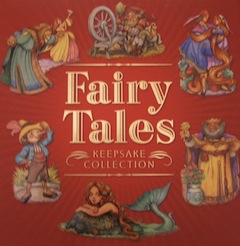Medication Administration Guidelines for Nannies
July 22, 2012 During your career as a nanny, there will be times when you may have to administer medication to your charges. Whether you’re treating a chronic condition that requires daily dosage or the occasional illness that can be battled with over-the-counter meds, it’s absolutely essential that you follow the medication’s directions to the letter, as well as adhere to a few common-sense guidelines to prevent injury to your child or accidentally enraging your employers. As more news stories center around caregivers that deliberately administer medicine to their charges in order to make them drowsy and less active, it’s becoming more important than ever that a childcare provider avoid even the slightest hint of scandal.
During your career as a nanny, there will be times when you may have to administer medication to your charges. Whether you’re treating a chronic condition that requires daily dosage or the occasional illness that can be battled with over-the-counter meds, it’s absolutely essential that you follow the medication’s directions to the letter, as well as adhere to a few common-sense guidelines to prevent injury to your child or accidentally enraging your employers. As more news stories center around caregivers that deliberately administer medicine to their charges in order to make them drowsy and less active, it’s becoming more important than ever that a childcare provider avoid even the slightest hint of scandal.
Never Administer Any Medication Without Consent
If your charge has a condition that must be medicated every day and you’ve already been instructed on how to administer the medication, calling to make sure that it’s okay to administer each dose might be overkill. However, that is absolutely the only situation in which you should ever give a child any medication without first discussing it with his parents. Medicating a fever, cold or allergy symptoms with an over-the-counter medication can provide a quick fix, but it may also be against your employer’s wishes to use such substances without a doctor’s advice to do so, or without being able to evaluate the situation themselves first. Should your charge become feverish or appear to have other symptoms of an illness, you should contact your employer to report those symptoms and ask if they would like for you to administer any medication, rather than taking matters into your own hands. It is wise to request permission in writing for the administration of daily or occasional medications to prevent any possibility of disputes in the future.
Follow All Directions Carefully
More than fifty percent of avoidable deaths in children under the age of five are caused by incorrectly administered medication; there’s no such thing as being too cautious when it comes to these chemical substances and the welfare of your charges. If your employer has given you permission to administer medication to their child, it’s imperative that you explicitly follow the dosage instructions. For babies, even a slight overage can cause unpleasant or dangerous side effects, so double-check liquid measurements before administering the medication and be sure to use the proper dosing device. Dosage schedules must be strictly adhered to, as well; administering a second dose of any medication before the suggested amount of time has elapsed is asking for trouble.
Keep a Dosage Log
In order to ensure that there’s no confusion regarding the last administered dose of a medication, it’s wise for both you and your employers to keep a log in which all dosage information is entered. With a glance, you’ll know when the last dose was administered, how much it was, and who delivered the dose, eliminating the chance of either you or your employer administering a second dose too early.
Be Aware of Any Possible Side Effects
Depending on the medication and the condition that it’s intended to treat, there is a wide array of possible side effects. Because some of them can be signs of complications or are dangerous in and of themselves, it’s vitally important that you’re aware of any that have been reported as a result of using the medication. Additionally, some side effects can make a normally safe situation, like going out in the sun, dangerous for a child; in order to ensure that you’re prepared for any outcome as a result of administering a new medication, you must be well informed.
Don’t Be Afraid to Ask Questions
As the old adage goes, there’s no such thing as a stupid question. Keeping that in mind is important when you’re dealing with children that are not your own; even typically-easygoing parents can become quite upset when they feel that their child has received care that they didn’t authorize, or are being cared for in a manner that doesn’t jive with their chosen parenting style. By asking any questions that you feel are relevant, you can ensure both the safety of your charges and the satisfaction of your employer.
Finally, it’s also essential that you have the correct tools to do your job properly and are set up for success; this means that you should have a specially-designed spoon for administering liquid medication, a thermometer, and a pill-splitter for older children. If your employers don’t keep these items on hand, they’re relatively inexpensive and are great investments for any nanny or childcare provider. You should also keep all medications out of kids’ reach, and make sure that you have the phone number for poison control, the doctor, and the local pharmacy on hand in the event of an unfortunate mishap.
Posted in Nannies | Comments Off on Medication Administration Guidelines for NanniesWhat Nannies Need to Know About Workers’ Compensation
July 19, 2012 Workers’ compensation insurance provides injured workers with wage replacement benefits and covers medical costs incurred as a result of injuries sustained in the workplace. The laws governing workers’ compensation vary widely from state to state, creating a confusing situation for many nannies and their employers. Often, domestic workers and the families that employ them are unaware of the financial risk that failure to carry such insurance carries; in the event of an injury, either or both party can sustain significant financial damage when injuries occur during the course of work-related activity. Additionally, employers that fail to provide workers’ compensation coverage in states that require such insurance are likely to find themselves in a financially risky situation in the event of even a relatively minor injury.
Workers’ compensation insurance provides injured workers with wage replacement benefits and covers medical costs incurred as a result of injuries sustained in the workplace. The laws governing workers’ compensation vary widely from state to state, creating a confusing situation for many nannies and their employers. Often, domestic workers and the families that employ them are unaware of the financial risk that failure to carry such insurance carries; in the event of an injury, either or both party can sustain significant financial damage when injuries occur during the course of work-related activity. Additionally, employers that fail to provide workers’ compensation coverage in states that require such insurance are likely to find themselves in a financially risky situation in the event of even a relatively minor injury.
State-to-State Variation
Employers of domestic workers in Colorado, Illinois, Kentucky, Michigan, New Jersey, New York, Utah and Washington are only required to obtain workers’ compensation insurance if their nanny is a full-time employee. Part-time and full-time employees in Alaska, California, Connecticut, Delaware, District of Columbia, Hawaii, Iowa, Kansas, Maryland, Massachusetts, Minnesota, New Hampshire, Ohio, Oklahoma and South Dakota are required by state law to be covered under an employer-provided workers’ compensation policy. Other states don’t require employers of a single domestic worker to carry insurance, though the laws governing liability vary among them. These complex laws are made even more difficult to decipher by variations in wording and particular requirements.
Homeowners’ Insurance Will Not Cover Domestic Workers
Many nannies and their employers make the mistake of believing that a homeowners’ insurance policy will cover any claims of injury, regardless of fault, to a non-family member on the property. This is, however, almost never the case. Guests and visitors injured in your employers’ home can file injury claims for medical bills and other related expenses, but these benefits are not designed to cover domestic employees.
Nanny Taxes and Workers’ Compensation
The Internal Revenue Service estimates that up to 70% of domestic workers in the United States are not compliant with tax regulations. Failure to comply with these laws, in addition to creating the potential for significant penalties for both parties, also typically precludes employers from obtaining the required workers’ compensation insurance. Non-compliant nannies that are injured in the course of their duties are not eligible for any workers’ compensation benefits; in the event of a severe injury that requires hospitalization or prevents a return to work, the loss of wages and medical bills can be financially devastating.
Nannies without personal insurance coverage that work “off the books” or in a state that does not require their employer to carry a workers’ compensation policy are likely to be responsible for any expenses incurred as a result of a workplace injury. Though non-compliant families are excluded from obtaining workers’ compensation coverage, paying employment taxes does not automatically include workers’ compensation benefits. Your employer will still have to obtain a separate workers’ comp policy, though it’s often available through their homeowners’ or renters’ insurance policy as a rider.
Workers’ Compensation Benefits and Litigation
Nannies that are injured on the job who have accepted a workers’ compensation settlement are prevented under the insurance laws of most states from suing their employers for pain and suffering; before accepting a settlement, nannies are encouraged to seek legal counsel. If you’ve been injured on the job and your employers don’t carry workers compensation coverage, you may be able to file a civil suit to reclaim lost wages and reimburse medical fees. Some states also allow workers to sue their employers outside of the workers’ compensation insurance system for injuries sustained as a result of intentional or egregious conduct, such as physical violence or refusal to correct unsafe working conditions.
Though a civil suit provides the opportunity for an uninsured, injured worker to receive a higher pay-out than a workers’ compensation settlement typically provides, the burden of proof regarding working conditions, willful negligence, and other contributing factors rests with the plaintiff. Workers’ compensation benefits are usually paid regardless of fault.
Working with children is unpredictable and exciting, which is part of the appeal for many nannies. This very unpredictability, however, can expose a childcare provider to potentially-serious injuries that affect her career, whether on a short-term or permanent basis. Before accepting a post, you should always discuss any concerns you have regarding workplace injury compensation and insurance. For added security and peace of mind, these provisions can and should be included in your written nanny agreement.
Posted in Nannies | Comments Off on What Nannies Need to Know About Workers’ Compensation10 Lost Arts Parents and Caregivers Can Teach Their Charges
July 9, 2012 Observe any group of children for any length of time and it’s clear that today’s children are different that those of yesteryears. While technology advances have definitely provided advantages to youth of the 21st century, when it comes to homemaking, communication and playtime, some things have become a lost art.
Observe any group of children for any length of time and it’s clear that today’s children are different that those of yesteryears. While technology advances have definitely provided advantages to youth of the 21st century, when it comes to homemaking, communication and playtime, some things have become a lost art.
To rediscover things of times past, consider teaching your children:
1. The art of writing thank you cards. Many children today operate with a sense of entitlement and as a result, fail to properly acknowledge and thank people for the things they contribute to them. If someone has done something kind for a child, like give a gift or taken her on a special outing, writing a thank you note is an appropriate way to say thanks.
2. The art of handwritten notes. The handwritten word is a powerful and personal communication tool. With computers and cell phones that function as mini computers, hand written notes have become a think of the past. Encourage children to write a handwritten letter to a grandparent, pen pal or friend. They’ll be excited to receive their own mail back.
3. The art of storytelling. Long before books, people used to tell stories. Stories can be used to teach a moral principle, share an educational lesson of for pure entertainment. Passing down folklores and fairytales, or sharing stories about your family’s heritage can instill a love of storytelling in your children.
4. The art of being neighborly. Life is so busy the needs of others around us can go unnoticed. Encourage children to care for their neighbors. Brining cookies to a new family that moves in, helping to pick up an elderly neighbors lawn or offering to take in the mail for a neighboring family that goes on vacation can help children learn the value of being neighborly.
5. The art of respecting elders. The way children talk to and treat adults and those in authority at times can be downright embarrassing. Reinforce the importance of respecting elders by modeling respect. Insisting children address adults using their proper title, hold and open doors for adults and listen to those in authority, like their teachers, can help reinforce the importance or respect.
6. The art of thinking. Children need to learn how to think for themselves. Encourage them to consider information for themselves before accepting it as fact. If they think something doesn’t make sense, help them explore their thoughts and encourage deeper consideration of topics that interest them.
7. The art of problem solving. Helping children to see problems as challenges can help to foster a desire to problem solve. Encourage children to face challenges with confidence and brainstorm with them ways to overcome obstacles.
8. The art of sewing. Mending a button or taking up a hem is a life lesson that is worth teaching. Practice simple sewing projects and progress to other things, should the child express real interest.
9. The art of having manners. Looking at someone in the eyes when speaking to you, saying please, thank you and excuse me when appropriate and not reaching across the table are a few lessons all children could benefit from learning.
10. The art of free play. Never have children been so overscheduled. Play is a child’s work and too often, children aren’t given an opportunity to play. Free time provides the opportunity to children to explore their world around them and create fun for themselves.
While making headway in the areas of science and technology are admirable, loosing footing in the areas of kindness, courtesy and conversation is not so much. Don’t let technology rob your children or learning the lost arts and valuable lessons that have stood the test of time.
Posted in Nannies | 1 Comment10 Ways Working Moms Can Volunteer at School
June 28, 2012 When children are young there is a lot of parent participation that’s encouraged through classroom parties and events because kids are still learning how to be away from home. Most kids want their moms to be able to volunteer at the school for these events so that they can still see their mom in the hallway or at the class party. However it’s not always feasible for working moms to volunteer onsite regularly. Fear not, there are ways that you can volunteer, even if you work full-time.
When children are young there is a lot of parent participation that’s encouraged through classroom parties and events because kids are still learning how to be away from home. Most kids want their moms to be able to volunteer at the school for these events so that they can still see their mom in the hallway or at the class party. However it’s not always feasible for working moms to volunteer onsite regularly. Fear not, there are ways that you can volunteer, even if you work full-time.
Check out these 10 ways that working moms can volunteer at school:
- Coordinate class parties through e-mail. Technology makes it much easier to plan events these days. The teacher may send home flyers asking for snacks and craft supply donations. Consider volunteering to coordinate these donations; this is an easy task to accomplish over e-mail or phone, and allows you to still participate in some way with the party.
- Cut out or prepare things at home. Many times the teacher will have a need for different shapes to be cut out or packets to be put together for a party or upcoming project. These types of activities can be sent home with your child and you can do them in the evening when you have time so that you can still be involved.
- Send money to help with a project. With the cut-backs that the government is making, oftentimes the teachers don’t have enough funds to do creative projects with the kids. By sending in money for a special project you can help the teacher explain a concept in a new and fun way.
- Make calls at night. Many activities happen at the school and there may be times when there’s a need to call parents and remind them of an event. For example, if the choir is going on a field trip on Friday and the kids need to remember to wear their choir shirts and to bring their permission slips, then working parents can make these kinds of calls from their cell phone while they are waiting at soccer practice or during the evening when they are home.
- Provide extra school supplies. Throughout the year, the classroom supplies may start to dwindle. Contact the teacher in January and ask her what items she is running low on and send in additional classroom supplies.
- Ask your nanny to stand in for you. If you have a nanny you could have her volunteer at the school in your place. She may also be able to attend class parties or other daytime events when you are unable to attend. Your child will be happy because they have someone there that’s cheering or clapping just for them.
- Join the PTA or PTO at your child’s school. You may not have time to join the board of the PTA, but by supporting the PTA, your money goes towards a lot of projects that will benefit every child in the school. Funding these programs for the students allows the school to concentrate their funds on other things, like teacher salaries.
- Chaperone a field trip. A field trip is a one time commitment that you may be able to take off work for, if you plan far enough in advance. If your child is going to the museum or aquarium with his class and you can take a personal day, you will be able to share that experience with him. Unlike being a room mom or lunch mom, this is a one-time deal and something you can commit to and plan for ahead of time.
- Help with set up for an evening event. Many times music or sporting events are held during the evenings. Offer to help with set up or clean-up for one of these events after you get off work.
- Volunteer to work at the concession stand. Sometimes events like the school carnival will be held on a weekend. Volunteer at a booth or concession stand if you can. The shift is usually only an hour or so and when it is over, you can enjoy the event with your child.
The next time your child asks why you can’t come to the class party, explain to him that you have to go to work, but that you are still trying to be involved regardless. Remind them of the phone calls you made or the 30 hearts that you cut out for their class project. Your child will appreciate that you are making the effort to be involved.
Posted in Nannies | 2 Comments10 Great Toys for Sight Challenged Kids
June 25, 2012 Kids love toys of every shape and size, there’s no doubt about it. But not all children are alike and not all kids like the same things. When buying a gift for any child, it’s important to consider if the child will enjoy the gift. The same holds true when buying a gift for a blind or visually impaired child. Fortunately, there is an amazing array of toys that have been specially designed or modified for sight challenged kids so that they are able to enjoy many of the same toys as those who were blessed with good vision. There are also many popular toys that both blind and sighted children enjoy.
Kids love toys of every shape and size, there’s no doubt about it. But not all children are alike and not all kids like the same things. When buying a gift for any child, it’s important to consider if the child will enjoy the gift. The same holds true when buying a gift for a blind or visually impaired child. Fortunately, there is an amazing array of toys that have been specially designed or modified for sight challenged kids so that they are able to enjoy many of the same toys as those who were blessed with good vision. There are also many popular toys that both blind and sighted children enjoy.
Check out these 10 great toys for sight challenged kids.
- Let’s Rock Elmo: Let’s Rock Elmo is an interactive toy that sings and plays music. The toy comes with various instruments that Elmo and the children can play together. Let’s Rock Elmo does not have to be purchased through a specialty store and can be purchased at most large retailers. Make sure to install the batteries before you give the toy to the child so that they can start playing with it immediately.
- Braille Learning Doll: The Braille Learning Doll is a specialty doll that is available through several different vendors, including Enable Mart. There are 6 buttons on the stomach of the doll which allows the child to make all braille letters. This is an educational gift that will help the child learn Braille.
- Board games: A company called Maxi Aids offers a large line of standard board games that have been modified to work for sight challenged kids. Some of the games include Checkers games that have high contrast color pieces, Scrabble games that have large print tiles and boards, and Monopoly that comes in a large print edition. Since both sight and blind people can play these games, it can help foster inclusion.
- Bop It/Bop It XT: Bop It is a fantastic game that a child can play alone or with friends. The Bop It gives verbal commands that tell you to bop it, twist it, pull it and shake it. Once the child knows where the different parts of the game are they should be able to play by listening to the verbal cues. There are many different games within the Bop It toy and there are different levels of play as well. This is a great game for the whole family.
- Dolls: If you buy a doll, make sure that it plays to more than one sense. There are dolls that talk and play music that a blind child may enjoy. Dolls with texture can be great for visually impaired children too. Look for clothes that have patches or embroidery on them so that the child can tell the difference between her dolls and doll accessories.
- Stuffed animals: Everyone loves a nice soft stuffed animal to hug, but to make this toy even better for a sight challenged child you may want it to engage more senses. Choosing different types of stuffed toys, like ones stuffed with beans, crinkly paper and batting can help engage additional senses. The texture of the animal is important too. Maybe it’s a lion and it has a long haired fuzzy mane, soft fur on the back, and a long tail. All of those things will make the toy more fun for a sight challenged child.
- Braille games: Maxi-Aids also makes card games like Uno, Phase 10 and Dominos that all come equipped with Braille cards. While the child can often feel how many dots are on a domino they can’t tell what color it is without some help from the Braille dots.
- Audio Dart Master: This dart game has a texturized board that the sight challenged person can feel prior to play. The rest of the game is played by audio commands. The board calls out the player’s name and score, and will even give off a signal to help a sight challenged player aim for the bulls-eye. It’s available at audiodartmaster.com.
- Wikkistix: This is a very useful gift because it’s a toy, a craft, and is useful for marking things for sight challenged kids. Wikkistix are sticky string-like sticks that come in various colors and can be bent and wound around anything. Kids can make creatures to play with or create greeting cards. The Wikkistix can even be used to teach shapes and to label things like a keyboard.
- Rib-it-Ball: Someone was really thinking when they created the Rib-it-Ball. The ball has sections of bright colors so it’s easier to see for sight challenged kids. The ribs stick out so that it’s easy to catch and the ribs crinkle like paper so it’s easy to hear when it’s being thrown to you. This ball will help with muscle control and hand/eye coordination.
One of the most important things you can do when picking a gift is to find out what the child enjoys. Keep these toys in mind the next time you are on the hunt for the best gift for a sight challenged child in your life.
Posted in Nannies | Comments Off on 10 Great Toys for Sight Challenged Kids10 Great Toys for Hearing Challenged Kids
June 12, 2012 If you’ve ever bought a toy for a child, you know it’s no easy task. You have to consider what are they into, what they already may have, how old they are and what types of toys are age-appropriate, among a slew of other things. When you’re buying a toy for a child who is deaf or hard of hearing, you need to take those same things into consideration as well, in addition to their hearing impairment, which can be an intimidating undertaking. Worry not, though, because there are a great many toys on the market for hearing challenged kids.
If you’ve ever bought a toy for a child, you know it’s no easy task. You have to consider what are they into, what they already may have, how old they are and what types of toys are age-appropriate, among a slew of other things. When you’re buying a toy for a child who is deaf or hard of hearing, you need to take those same things into consideration as well, in addition to their hearing impairment, which can be an intimidating undertaking. Worry not, though, because there are a great many toys on the market for hearing challenged kids.
Keep this list around for the next time you are in search of the perfect gift for your hearing challenged little friend.
- See it and Sign it: An educational game that teaches the child to sign. With any child toys offer a great way to reinforce what they are learning and by having this game they can have fun while they are reviewing their signs. The See it and Sign it toy comes in two levels so that as they gain experience they can learn even more words to sign. The See it and Sign it 2 even has Spanish translations.
- Sign Language Peg Puzzle: This fun puzzle allows the child to practice recognizing their sign language letters while working on their coordination by putting the pieces into the board. The colors are bright and fun and could even be used to spell short words.
- Food Fun Flash Cards: Food Fun Flash Cards are bright, entertaining flash cards with pictures of food on one side and the sign for that food on the back. These cards will help the child learn and practice signing food words.
- Cloud b turtles: Just the cutest plush toy with a hard shell, these turtles are available in different colors and they do different things. One has a light that projects constellations through its shell, and another shows soothing water images for bedtime. The turtles feature an auto shut off after 45 minutes so that you can feel good about walking out and leaving it on. It’s also educational because there are 8 actual constellations shown and a book that comes with it explaining what each constellation is.
- Sign-O Bingo: This is a computer game that offers a new twist on an old favorite by using sign language to play Bingo. You can practice signing or just use the signs you already know. This is a fun way to teach signing to friends and family in a fun and non-stressful way.
- Play-doh: It can be purchased almost anywhere and it’s inexpensive. Play-doh is very tactile and comes in bright colors. Because it’s a toy that is focused on touch and sight, the child won’t miss out on any features and will still engage other senses. Some play-doh even comes in scents now and this would add a great extra feature for kids that are deaf or hard of hearing.
- Doll house or barn: These kinds of toys can be found anywhere and are fun for all kids. This kind of imaginative play will help them learn to play socially with other children. They can make up any type of scenario they want when playing with a doll house or a barn. The colors of the doll houses are often bright and colorful as well which appeals to hearing challenged children as well as all kids.
- Balls: Again, a very basic toy and there’s nothing very magical about them, but balls provide opportunities to works on hand/eye coordination and to encourage exercise. Children can throw and catch the ball with a friend or parent. Balls that have a fun texture or lights are even more fun because they bring in more senses. This is important for a child who has lost a sense or has decreased ability with it.
- Mini-Rib it Ball: This toy is great for all kids, but especially good for those that are hard of hearing because there’s a pull string on it that makes the ball vibrate. The ribs on the Mini-Rib it ball will crinkle so if they are hugging it close they might be able to hear the crinkling. The ribs can be chewed on during teething and they make the ball easy to catch when you start throwing the ball back and forth. It’s soft so it won’t hurt if you miss it.
- Fingerspelling Blocks: One thing that might not occur to everyone is that when learning to fingerspell, it’s often hard to see the hand all the way around. Yes, they can picture the front and the back of the hand, but it not the same as being able to see the hand in 3D and to be able to touch and feel it. The Fingerspelling blocks are a bit of a splurge at $150, but they can be so worth it.
Good luck and happy shopping.
Posted in Nannies | Comments Off on 10 Great Toys for Hearing Challenged Kids10 Facebook Status Updates from The Ugly Duckling
June 9, 2012 There’s something about adolescence that moves even the tougher specimens to identify with Hans Christian Andersen’s beloved misfit, The Ugly Duckling. Awkward, transitioning bodies and the par-for-the-course sense of displacement are both prominent themes in the tale, making it the perfect story for angsty tweens and teens, even if they won’t admit it. There are also few things as essential to the modern adolescent as social networking; in the interest of combining these two elements, here are ten Facebook status updates that The Ugly Duckling might have made.
There’s something about adolescence that moves even the tougher specimens to identify with Hans Christian Andersen’s beloved misfit, The Ugly Duckling. Awkward, transitioning bodies and the par-for-the-course sense of displacement are both prominent themes in the tale, making it the perfect story for angsty tweens and teens, even if they won’t admit it. There are also few things as essential to the modern adolescent as social networking; in the interest of combining these two elements, here are ten Facebook status updates that The Ugly Duckling might have made.
- “No one understands me! Even my own mother hates me!” – Though she entertains the idea of loving her unattractive duckling equally for a while, the Ugly Duckling’s inadvertent adoptive mother eventually breaks down and says that she wishes that the cat had eaten him.
- “Bullying is totally wrong. Share if you believe that bullies are jerks!” – In an early example of the pain that bullying and ostracism can cause, the Ugly Duckling suffers terrible treatment from those around him. “The ducks pecked him, the chickens beat him, and the girl who fed the poultry kicked him with her feet. So at last he ran away,20 frightening the little birds in the hedge as he flew over the palings,” Andersen says of his long-suffering hero.
- “If you don’t love me at my worst, you don’t deserve me at my best.” – Usually reserved to the status updates of teenage girls, this oft-circulated quote is the rallying cry of the awkward adolescent. It’s not difficult to imagine a beleaguered Ugly Duckling identifying with it as he’s shunned by his peers.
- “Everyone hates me because I’m ugly! I’ve had it! I’m running away, and DON’T come looking for me!” – Teenage runaways are no laughing matter, but that doesn’t stop angry kids from making these impassioned statements. The Ugly Duckling, however, actually does run away from the farm where he was born, in search of less hostile environs.
- “I finally have real friends! Like if you have one true friend who loves you for who you are, not how you look!” – Meeting two wild geese is a turning point for the Ugly Duckling, as they frankly reference his ugliness but aren’t concerned with it in the slightest. They ask him to join them, providing him with the first true friends of his young life.
- “Hunters found us today. R.I.P., my friends. :-(( ” – Almost immediately after finding a place of acceptance and friends that don’t care about his appearance, the Ugly Duckling and his comrades are attacked by hunters. The wild geese are killed, leaving the long-suffering Duckling once again on his own.
- “Some people are so full of themselves! IDK why they think they’re so great. Ugh.” – After the death of his friends, the Ugly Duckling seeks shelter in a cottage inhabited by an old woman, a tom cat and a hen. Filled with a shared sense of superiority, the hen and tom cat sneer at the Duckling’s unattractiveness and inability to pur or lay eggs, lording their accomplishments over him.
- “Today I saw the most beautiful birds ever. I don’t know what they’re called, but I wish I could be just like them.” – Having had enough of the clucking hen and purring tom cat, the Ugly Duckling once again sets out on his own to seek his fortune. Summer becomes autumn, which begins to give way to winter, and the Ugly Duckling catches his first glimpse of a group of swans. Overcome by their beauty, he feels a kinship that he cannot name. They fly away without noticing him.
- “After yet another typically miserable misadventure, I guess I’ll be trying to figure out how to survive the winter on my own.” – As winter begins in earnest, the Duckling struggles to survive on a freezing pond, swimming incessantly to keep the water from freezing. Eventually he loses his battle with the elements and finds himself frozen into the surface of the pond, unable to free himself. He’s freed by a peasant and finds a brief respite with them, but is soon left to brave the rest of the harsh season alone.
- “I never dreamed of such happiness as this, while I was an ugly duckling.” – The last line from Hans Christian Andersen’s tale is a fitting one for teenagers blossoming into young adulthood, more comfortable in their own skin and less driven by hormonal angst.
Though the Ugly Duckling eventually grows up and becomes the most beautiful of all the swans he’d once envied, he learns a valuable lesson about the nature of duality. Despite his overwhelming happiness, there’s an underlying shame and sense of unworthiness that is not resolved as the story closes.
Posted in Nannies | Comments Off on 10 Facebook Status Updates from The Ugly Duckling10 Reasons Why Nannies Should Watch the Cartoon Network
May 31, 2012 Working as a nanny means spending the majority of your time surrounded by kid-centric activities, programming, meals and outings. And while watching more cartoons might not top your list of fun things to do in your spare time, it’s also a good way to stay involved and aware of what the kids are watching, especially on TV stations like Cartoon Network. Here are ten ways you can benefit from watching Cartoon Network:
Working as a nanny means spending the majority of your time surrounded by kid-centric activities, programming, meals and outings. And while watching more cartoons might not top your list of fun things to do in your spare time, it’s also a good way to stay involved and aware of what the kids are watching, especially on TV stations like Cartoon Network. Here are ten ways you can benefit from watching Cartoon Network:
- For Monitoring Purposes – When busy parents leave you in charge of their children, there’s an inherent measure of trust present that you will do your best to shield those charges from inappropriate and questionable content. By keeping an eye on the Cartoon Network, which is likely a household favorite, you can get an idea of what programming is and is not appropriate for your charges to be watching.
- Keeping Up With Kid Slang – Teenagers aren’t the only ones with their own languages; kid slang changes just as quickly and can be just as inscrutable to adults. However, keeping up with your charges’ favorite programs can give you an inside track on the sources of some of their new lingo.
- Familiarizing Yourself With Favorite Characters – Every child has a favorite character; one that they emulate, collect their merchandise, and request as the theme for birthday parties. Having a good idea of who these characters are and what makes them so appealing to your charges can be a great way to get to know them on a personal level.
- Bonding Time – Spending time with the children in your care, even during downtime, is a great way to ensure that the bond between you is strong and that they feel safe, loved and happy in your presence. Though it might not be the most exciting part of your day, spending cartoon time beside your charges rather than treating it as Nanny Break Time is one of the quickest ways to bond with them.
- To Prepare For Experimentation – Most kids know better than to jump off of a cliff just because they saw Wile E. Coyote doing it, but that doesn’t mean they won’t get a wild hair to recreate the scene by taking a deliberate header from a marginally safer height. Seeing the same stunts that the kids do can give you some valuable insight into the things that they might be tempted to do later, which can go a long way towards helping you prevent it.
- To Create Talking Points – Finding common ground for conversation with older kids can be a bit difficult; however, if you’re watching the same shows and sharing some of the same experiences, you might find that talking points present themselves naturally throughout the course of the day.
- Reliving Your Own Childhood – Plenty of the Cartoon Network’s daytime programming line-up consists of old-school animation and reruns of vintage favorites. On days that you’re feeling particularly nostalgic, settling in with the kids to watch Looney Tunes might be just what the doctor ordered.
- To Keep Track of Screen Time – For nannies that truly dislike cartoons, each and every second spent in front of the television is carefully accounted for and counted down. Forcing yourself to watch along with the kids can help ensure that TV time doesn’t go a bit longer than the rules allow simply because you were otherwise engaged and lost track of time.
- Choosing Programming in Advance – Having a basic idea of the shows that come on during the daytime lineup can help you make TV time schedules in advance that include programming you feel that your employers and your charges will be equally happy with.
- Adult Swim! – When the kids have gone to bed and you’re safe in your quarters, unwinding with some adults-only animated comedy might be just what you need to prepare for the next busy day ahead.
There are tons of reasons why nannies and parents alike should familiarize themselves with the television programming that kids are watching; these are just a few of them. Staying abreast of changes in scheduling and content is one of the best ways to ensure that little ones aren’t being bombarded with images and concepts that are inappropriate for their age and comprehension level.
Posted in Nannies | Comments Off on 10 Reasons Why Nannies Should Watch the Cartoon Network10 Fairy Tales that Actually Could Happen
May 23, 2012Fairy tales can come true, it can happen to you.
If you’re young at heart.
Young At Heart lyrics © Universal Music Publishing Group
 Yes, we know. If fairy tales could actually happen, they wouldn’t be fairy tales. Bear with us while we attempt to convince both you and ourselves of the impossible. What if you really could see a fairy tale come true? Think of the premise behind some familiar fairy tales and consider the possibility of some of them really happening. We’ve thought it over and have come up with ten that we think could come true:
Yes, we know. If fairy tales could actually happen, they wouldn’t be fairy tales. Bear with us while we attempt to convince both you and ourselves of the impossible. What if you really could see a fairy tale come true? Think of the premise behind some familiar fairy tales and consider the possibility of some of them really happening. We’ve thought it over and have come up with ten that we think could come true:
- The Ugly Duckling – This one happens all the time, in fact. Who hasn’t gone to a high school reunion and witnessed the knockout beauty who used to be the homely, invisible girl from chemistry class? We rest our case.
- The Boy Who Cried Wolf – Another example of a fable which has its basis in reality. This is a rather familiar story that many of us relate to in our own lives. We’ve even seen a tombstone that read, “I told you I was sick”. Poor soul was probably a hypochondriac whose family and doctor had just stopped listening.
- Beauty and the Beast – We’ve personally seen this one come true many times, especially when we were still single. We always just assumed that they were beasts with fat wallets, or … something. Anyway, this one can and does come true. That is, except for the part about the beast actually being a handsome prince, but you can’t have everything.
- The Emperor’s New Clothes – Follow with us on this one. Let’s say that, instead of an emperor you had a real estate mogul worth a fortune. And instead of having no clothes, he just had really bad hair. Are you with us? Then you can see how fairy tales can in fact, um, trump reality.
- Jack the Giant Killer – Anyone who doesn’t believe that this fairy tale about a young boy who takes down some giants can actually happen hasn’t been paying attention. We’ll offer a couple of names for you to ponder: Mark Zuckerberg, the 1980 U.S. Olympic hockey team, and Rosa Parks. ‘Nuf said.
- Cinderella – We’re thinking that Kate Middleton, or for that matter Princess Diana before her, fairly fit the role in this fairy tale. They may not have had evil stepmothers, or had to step into a glass slipper to win over their prince, but they surely captured the imagination of the rest of us who still see it all as a fairy tale.
- Bluebeard – Sad to say, we can see this one actually happening too. It’s not a pretty fairy tale, nor one we’d like to see come true, but it does have enough elements in reality to be a possibility.
- The Turnip – A German fairy tale about a pair of brothers, envy and virtue. The turnip in the plot represents the fruit of hard work versus easy wealth, and there’s a lesson in here that rings true and has undoubtedly been seen in real life already.
- The Nail – Here is a morality tale about procrastination and haste. This story becomes reality all too often in the lives of those caught up in their own priorities who fail to see the need to slow down and tend to the little things around them.
- The Peasant in Heaven – In this story of our heavenly rewards, a peasant and a rich man come before St. Peter, and receive vastly different greetings. The message about riches in this life and beyond are compelling, and we can only hope that at least part of this fairy tale comes true.
There are elements of fairy tales in our mundane, everyday lives. We just have to take a moment to really see them. After all, when we were children didn’t we all wish we lived in a fairy tale? Well, now you can say you really do.
Posted in Nannies | Comments Off on 10 Fairy Tales that Actually Could Happen10 Lessons Humpty Dumpty Teaches Other Large Egg People
May 7, 2012 Most fairy tales and nursery rhymes have a moral to them of some sort, though some may be a bit difficult to discern. Some have origins of questionable pedigree, as in the case of Humpty Dumpty, which is believed to have been intended as a riddle. Nevertheless, we believe that even Humpty had a message for us, and today we’re sharing ten possibilities with you:
Most fairy tales and nursery rhymes have a moral to them of some sort, though some may be a bit difficult to discern. Some have origins of questionable pedigree, as in the case of Humpty Dumpty, which is believed to have been intended as a riddle. Nevertheless, we believe that even Humpty had a message for us, and today we’re sharing ten possibilities with you:
- If for some reason you’re not satisfied with a park bench or a chair like normal people and need to sit up on a wall, make sure you’ve got the number for the paramedics, and not waste time calling all the king’s horses and all his men.
- By the way, what exactly were all the king’s horses supposed to accomplish anyway? In the interest of saving valuable time, we’d suggest buying the glue straight from the hobby shop instead.
- Also, when sitting on a wall, an ovular-shaped egg-man might do well to wear a cup. It would help prevent wobbling, which, as you know, can lead to a great fall. That, plus the fact that your chances of making little humpties are greatly improved.
- It’s a good idea to keep a current photo of yourself in your wallet to assist those tasked with putting you back together again in the event that you haven’t learned your lesson. A blueprint for those who need to reassemble your scattered parts can make all the difference.
- For those occasions when only the cheap seats are available, why not consider going hard-boiled? You could hold together a lot better in the event of a mishap like Humpty’s, plus you stand a better chance of being able to bounce right back up instead of splattering.
- On the subject of available seats, it’s best to plan ahead and book event seating in advance. Take lunch breaks early to beat the crowds, and find a nice park bench closer to the ground. Bottom line: avoid the Bob Uecker seats by any means necessary.
- Since “Humpty Dumpty” actually refers to an alcoholic beverage, there’s no doubt a lesson in here somewhere about drinking and climbing walls. There’s a reason they refer to the state of inebriation as being a little tipsy, after all. Just some food for thought.
- Humpty Dumpty is the quintessential example of an egg “over easy”. He was poaching for quail from his perch on that wall. When the game warden spotted him, he scrambled and, unfortunately, became the recipe for egg drop soup.
- No one likes the smell of rotten eggs, so whenever you’re out on your own in a remote location, be sure to let someone else know egg-zactly where you plan to be and for how long. This way, if your return is delayed, it will be noticed.
- The main lesson that Humpty Dumpty teaches other large egg people is this: Even if an egg has just gotten laid, it’s no excuse for it to go carousing out in public drunk and acting recklessly. Friends don’t let eggs climb drunk.
DIY & Sign up Online
We have partnered with eNannySource to help you search for the perfect nanny in your area in addition to our other services.
Enter your zipcode to get started:
Nanny Articles
- How to Calm Back to School Jitters
- What to Include in Your Nanny’s Annual Review
- 25 Blogs Featuring the Most Inspiring Parenting Stories
- Crazy Things Kids Say About Old People
- 21 Blogs with Insightful Tips for Helping Kids Through a Move
- Is Lying to Your Kids About the Tooth Fairy Wrong?
- 21 Blogs Making Fun Homemade Mixtures for the Kids to Get Their Hands Into
- 10 of the Most Hated Cartoon Characters by Moms of All Time
- How to Hide Electrical Wires from Computers, TVs and Small Appliances
- 30 Blogs with the Best Tips on Helping Your Child Prepare for Standardized Testing
National Nannies History
- Pillow Agreement Definition
- Retroactive Caregiver Agreement
- What Is Condition and Warranty in Contract Law
- Shared Ownership Contract Template
- How to Start Labour Contract Business
- Prenuptial Agreement in Bengali
- State of Nj Installment Agreement
- When Does an Agreement Become Unconditional
- Illinois Contract Law Impossibility of Performance
- Service Agreement Francais
- Group Contains a Subject and a Verb in Agreement
- Tenant Commercial Lease Agreement
- Indigo Card Agreement
- Home Improvement Contractors License Louisiana
- The Contracts Rights of Third Parties Act 1999 Shall Not Apply to This Agreement
- Taliban Agreement Text
- 6 Months or 12 Months Tenancy Agreement
- Property Management Agreements Should Include the following except
- Agent Contracting with Humana
- Nrcan Collective Agreement


